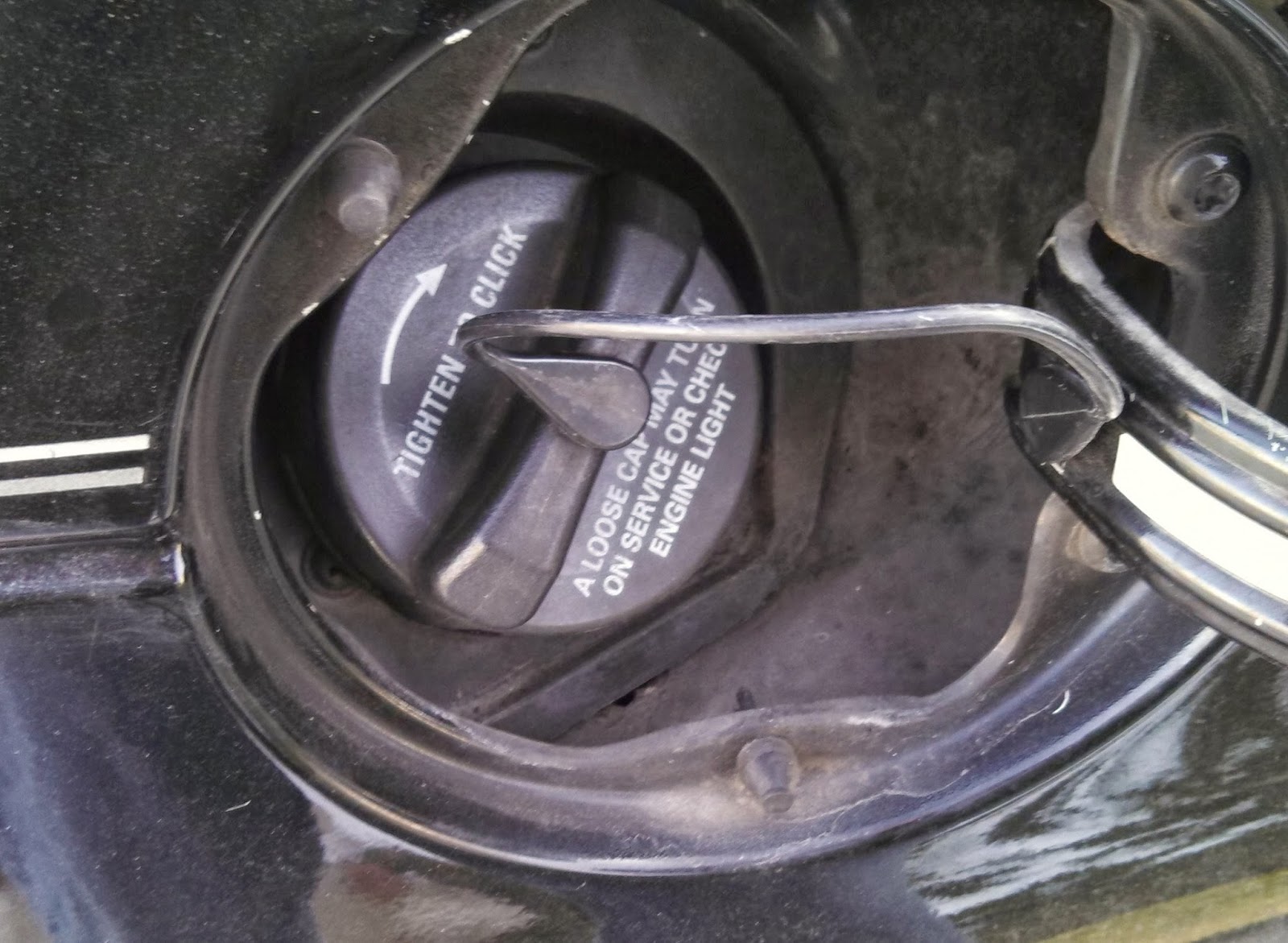That Pesky Check Engine Light: Is Your Gas Cap the Culprit?

That annoying check engine light has illuminated your dashboard. Panic sets in. Is it something serious? Before you rush to the mechanic, consider a surprisingly common and simple culprit: your gas cap. A loose, damaged, or missing gas cap can be the sole reason for that ominous warning.
Believe it or not, a seemingly insignificant gas cap plays a vital role in your car's emissions system. It seals the fuel tank, preventing fuel vapors from escaping into the atmosphere. These vapors are harmful pollutants, and modern vehicles have sophisticated systems to monitor and control them. A faulty gas cap disrupts this system, triggering the check engine light.
The introduction of On-Board Diagnostics II (OBD-II) systems in the mid-1990s made the check engine light more sensitive to emissions-related issues, including gas cap problems. Prior to OBD-II, the check engine light was primarily triggered by major mechanical malfunctions. Now, even a minor leak in the fuel system, like a loose gas cap, can illuminate the warning.
Addressing a gas cap-related check engine light is crucial. While it might seem like a minor inconvenience, ignoring the issue can lead to several problems. Continued fuel vapor leakage contributes to air pollution. Furthermore, a faulty gas cap can also slightly decrease fuel efficiency as gasoline evaporates. Finally, in some cases, ignoring the problem can lead to other, more serious issues if the underlying cause isn't actually the gas cap.
Determining if your gas cap is the problem is usually the easiest fix for a check engine light. Start by checking if the cap is loose. Tighten it firmly until you hear a click. If the cap appears damaged, cracked, or the seal is worn, replace it immediately with a new one designed for your specific car model. After tightening or replacing the cap, drive your car for a few days or several cycles. In many cases, the check engine light will turn off on its own once the car's computer recognizes the issue has been resolved.
Sometimes the light persists even after tightening or replacing the gas cap. In this scenario, it's time to delve deeper. You can use an OBD-II scanner, available at most auto parts stores, to read the specific error code stored in your car's computer. A code related to the evaporative emissions system, such as P0440, often points to a gas cap issue. However, it could also indicate other problems within the EVAP system, such as a leak in a hose or a faulty valve.
Here's a simple checklist for addressing a gas cap-related check engine light:
1. Check the gas cap for tightness.
2. Inspect the gas cap for damage or a worn seal.
3. Replace the gas cap if necessary.
4. Drive for a few days to see if the light turns off.
5. Use an OBD-II scanner to read the error code if the light persists.
Advantages and Disadvantages of Fixing a Gas Cap Related Check Engine Light
| Advantages | Disadvantages |
|---|---|
| Saves money on potential repairs. | May require purchasing a new gas cap. |
| Reduces environmental impact by preventing fuel vapor leaks. | May not resolve the check engine light if the issue is not gas cap related. |
| Improves fuel efficiency. | Requires some diagnostic effort if the problem persists. |
Five best practices for handling a gas cap-related check engine light:
1. Always tighten your gas cap until you hear the click.
2. Regularly inspect your gas cap for damage.
3. Replace your gas cap every 2-3 years as a preventative measure.
4. Use an OBD-II scanner to confirm the issue.
5. Consult a mechanic if the problem persists after replacing the gas cap.
Frequently Asked Questions:
1. Will a loose gas cap always trigger the check engine light? Not necessarily. It might take a few driving cycles.
2. Can I drive with a loose gas cap? It's best to tighten it as soon as possible to prevent fuel vapor leaks.
3. How much does a replacement gas cap cost? Typically between $10 and $30.
4. Will disconnecting the battery reset the check engine light? Yes, but the light will return if the problem hasn't been fixed.
5. How long does it take for the check engine light to turn off after fixing the gas cap? It can take a few days or several driving cycles.
6. Can I use any gas cap? No, use the one recommended for your specific car model.
7. What if the light stays on after replacing the gas cap? Use an OBD-II scanner or consult a mechanic.
8. Could a check engine light related to the gas cap actually be something more serious? Yes, it could be another issue within the EVAP system. It's important to diagnose further if the light persists.
Tips and tricks: When refueling, avoid topping off your tank. This can put pressure on the gas cap seal and potentially damage it. Also, make it a habit to visually inspect your gas cap every time you fill up.
In conclusion, addressing a check engine light related to a faulty or loose gas cap is a simple yet crucial car maintenance task. This relatively inexpensive fix can prevent fuel vapor leaks, improve fuel efficiency, and prevent potential further issues with your vehicle’s EVAP system. By following the steps outlined above, such as checking for damage, ensuring a tight seal, and utilizing an OBD-II scanner when necessary, you can save yourself time, money, and unnecessary stress. Remember, a proactive approach to car maintenance is always the best way to keep your vehicle running smoothly and avoid costly repairs down the road. Don't ignore that check engine light – it might be just your gas cap whispering for attention.
Unlocking the potential of cool platinum sherwin williams versatile hue
Uncovering nc scratch off ticket prizes a simple guide
Finding your dream cebu home a guide to houses for sale













